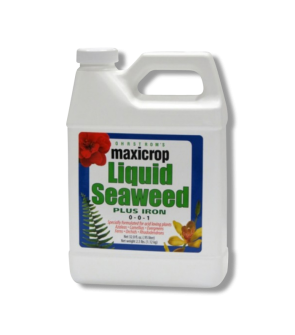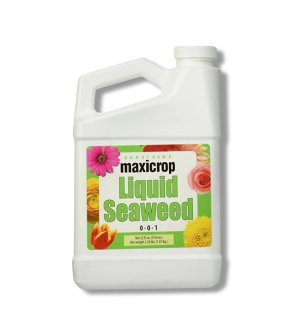7 Common Fertilizer Mistakes
Most Effective Products
7 Common Fertilizer Mistakes Homeowners Make
This article is a general page for common fertilization mistakes you would encounter when caring for your lawn. Here you can find detailed lawn care tips and explanation of theses mistakes when fertilizing.
The most common saying you will hear is some is good but more is better, this applies to one of the many mistakes beginning gardeners make when fertilizing. No one is a perfect gardener at the beginning and mistakes are a common part of life. If we did not make mistakes we would never learn anything.
The great thing about fertilizing mistakes is that you learn what works for you and have a better understanding of what not to do.
However, by following this simple guide you can help reduce chances of error and have a more successful control or understanding of fertilization.
Poor Water Management

While it may sound simple, the most common mistake homeowners make is overwatering their turf. Many fertilizers need to be watered in after application to activate the product, but too much water can make a lawn more vulnerable to weeds, pests, and disease.
Watering is also needed to keep the turf's soil moist and loose for easy plant growth and root development. Surprisingly, there is a correct way to water your lawn. Most grasses only need about 1 to 1.5 inches of water per week, including rainfall. We recommend that water is delivered all at once. Don't water a little every day, as this will cause roots to grow shallow and weaken your grass.
If you are noticing that your turf is retaining water for several hours then you may have possibly over-watered. Your lawn should be deeply watered once a week in the morning to ensure the water will travel to your turf's roots. When watered in the day or evening, you are risking the water being evaporated and for possible diseases.
Fertilizing At The Wrong Time

Fertilization is all about the timing. Many fertilizers have long residual effects, so make applications during the right season to get the best visible results.
The best window for applying fertilizer will depend on the local climate, geographical location, and your turf grass species, so your specific timing will vary. For warm-seasoned grass you will fertilize from February to October. For cold-seasoned grass you will fertilize in the second half of spring (April), and in September.
For both cold-seasoned and warm-seasoned grasses you will want to apply the fertilizer at least a month ahead of when it generally snows or frosts in your area.
Not Testing Your Soil

Everyone's lawn is different and should be tested to learn its nutrient makeup. Not running a soil test runs the risk of overstimulating or under stimulating your lawn with the wrong fertilizer.
You can get the supplies needed to run a soil test at home, but most university agricultural extensions should be able to conduct a full soil analysis for you. A full soil analysis will tell you your soil's pH level, its nutrient makeup, its organic composition, if toxic metals are present, and its soil content. Use this information to determine what fertilizer is best for you.
Using The Wrong Type Of Fertilizer

On the topic of using the best fertilizer for your lawn, be sure to read your product's label thoroughly before you finalize your purchase. There is no fertilizer that will work on everything due to various types of grass, soil, present lawn conditions, location, and climate.
First, look for the fertilizer's NPK ratio. NPK stands for Nitrogen, Phosphorus, Potassium, and is usually displayed on the front of the product. Knowledge of your lawn's turfgrass and the soil analysis will help you determine which NPK ratio to look for. You can also read the the product's label to learn more about application timing and frequency, the labeled application rate, and if there are restrictions on its use.
For example, in the southern region of the United States we have three fertilizers we recommend for spring, summer, and fall. For spring use Solutions 15-5-10 Weed and Feed Fertilizer for it has a slow release of nutrients and will also control weeds, for summer use Solutions Pro Gro Fertilizer to help provide essential nutrients during warm climates, and for the fall use Solutions 8-12-16 Fall Fertilizer to help strengthen your turf roots and provide a richer green color in the spring.
This being said, the appropriate type of fertilizer should be based on when you will apply it and the type of grass, soil, present diseases, and current nutrient levels in your lawn.
Applying Too Much Fertilizer

You followed all the application instructions correctly, but you are noticing that your turf is brown or appears burnt. One of the causes of this is over-fertilization.
Some homeowners assume that by throwing a handful of fertilizer onto your lawn it will automatically green up your turf when in reality this is not true. Fertilizer applications should be based on accurate measurements of your treatment area in square footage and the percentage of nutrients your lawn is supposed to contain.
If applied too little or too much, you will see damage within your turf such as browning, dry or rough grass, and less density within your lawn.
To accurately apply a fertilizer, measure in feet and multiply the area length times the width (length X width = square footage) to determine how much square footage is within the treatment area. Certain fertilizer products will have a recommended application rate on its label.
The standard application rate of fertilizer you want to apply is between 0.5 lb. to 2 lb. of fertilizer per 1,000 sq. ft. Refer to the product label on the selected fertilizer as these rates may vary.
To apply a fertilizer based on nutrient level you will need to divide the percentage of that nutrient in decimal form.
For example, say your lawn is needing 1 pound of nitrogen. You will divide the 1 from the the level of nitrogen in the fertilizer. Let's use Solutions 8-12-16 Fall Fertilizer as our example fertilizer in this instance. You will take the the 8 (convert to decimal form) in the Solutions 8-12-16 Fall Fertilizer and divide it by 1 to determine how many pounds should be used per sq. ft. (1 / 0.08 = 12.5 lbs.). Therefore, apply 12.5 pounds of fertilizer per 1,000 sq. ft. to supply 1 pound of nitrogen (if that is the level of nutrient needed in the soil).
Not Using An Insecticide

Pest control is just as essential as fertilizers. Without the application of a insecticide product, you are creating more of a hurdle for your fertilizer to tackle.
When you do not apply an insecticide to your foliage you are sending an open invitation for these pests to move in. Once present these pests will destroy your foliage by chewing, sucking, and reproducing. When plants encounter these activities from insects it leads to loss of nutrients, ultimately ending in death or permanent damage.
Given these issues, our go to product for insect infestations is Supreme IT. This insecticide product controls over 70 species of insects for up to 90 days. It is great to use within or outside your home against insects like adelgids or beetles.
A general application will be 1 fl. oz. of product per gallon to treat 1,000 sq. ft. This rate can vary from 0.2 fl. oz. to 2 fl. oz. per gallon depending on the target pest.
Not Consistently Applying Fertilizer

There is no doubt that there is a great care and patience needed for following a fertilization schedule. Some confusion around this is that some individuals believe you only should apply a fertilizer once. However, this is not entirely true.
Based on your location and turf, you will apply a fertilizer one time at the beginning of each season. There are three seasons spring, summer, and fall so in total you can possibly have 3 fertilizer applications per year. However, this is subject to change based on your location and the type of turf you have.
Three fertilizer applications may only be made for warm-seasoned grasses (February, June, and October) whereas with cold-seasoned grasses you will only have 2 fertilizer applications; one in the second half of April (spring) and in September (fall).
Key Takeaways
Why is Over-Watering Bad?
- Over-watering your turf is bad because it does not allow for your turf roots to soak in essential nutrients from fertilizers and also leads to other diseases like fungi.
When Should You Fertilize Your Turf?
- Generally you will want to make a total of 3 fertilizer application per year per season. However, if you have cold-seasoned grass then you can only make a total of 2 fertilizer applications in the second half of spring and beginning of fall.
Can I apply a Fertilizer and an Insecticide to My Lawn?
- Yes, you should always apply an insecticide product with a long residual effect to help fight against pests. In return, this provides less damage for your fertilizer to handle.
Why Should You Test the Soil Before Applying an Fertilizer?
- Having your soil tested provides you with essential information such as what type of grass you have, your soils current nutrient levels, and any underlying diseases that may not be visible. With this knowledge, it can help you choose the most accurate fertilizer and provide your lawn with the care it needs.
How Much Fertilizer Can I Use?
- The amount of fertilizer you will use will be based on the current state and type of lawn and its treatment areas total square footage. To find it, you will measure in feet and multiply the length times the width, follow the formula (length X width = square footage).













































































































































































































































































































































































































































































































































